#ape primate
Text

Homo Habilis and Titanoboa
#encounter#homo habilis#ape#ape primate#human evolution#early human#anthropology#stone age man#prehistoric man#neanderthal#titanoboa#snake#giant snake#reptile#animal#paleontology#people#group#extinct#clouds#blue sky#plain#bushes#3d#illustration#panorama
6 notes
·
View notes
Text
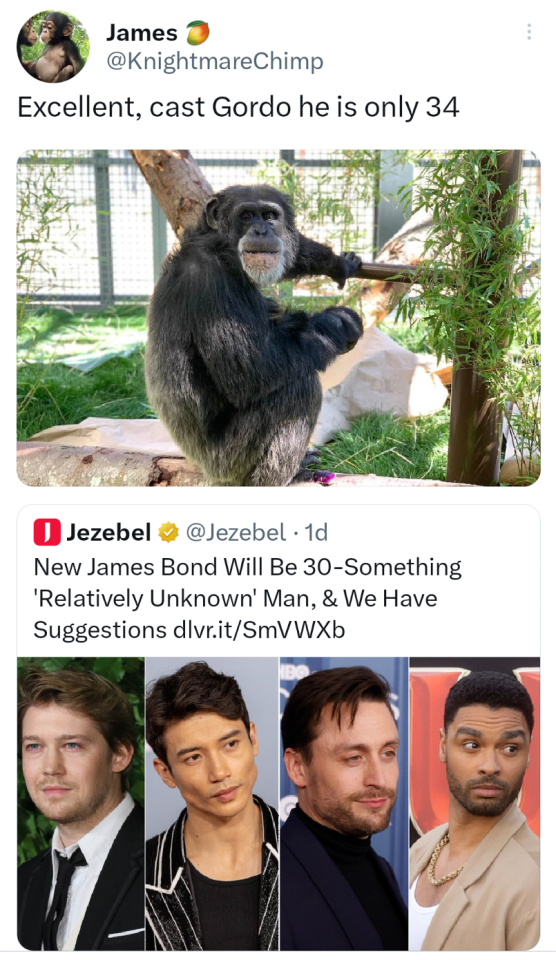
5K notes
·
View notes
Text
Apes are a kind of monkey, and that's ok
This is a pet peeve of mine in sci comm ESPECIALLY because many well respected scientific institutions are insistent about apes and monkeys being separate things, despite how it's been established for nearly a century that apes are just a specific kind of monkey.
Nearly every zoo I've visited that houses apes has a sign somewhere like the one below that explains the supposed distinction between the two groups, focusing on anatomy instead of phylogeny.

(Every time I see a graphic like this I age ten years)
Movies even do this, especially when they want to sound credible. Take this scene from Rise of the Planet of the Apes:
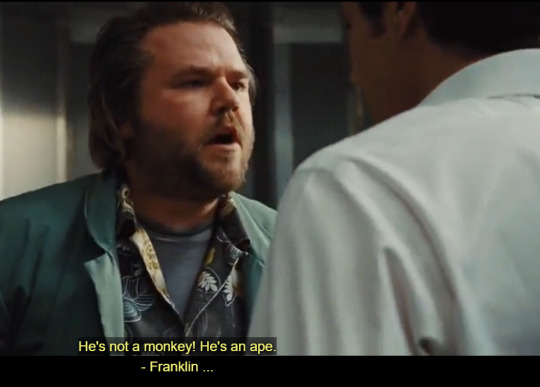
This guy Franklin is presented as the authority on apes in this scene, and he treats James Franco calling a chimpanzee a monkey like it's insulting.
But when you actually look at a primate family tree, you can see that apes are on the same branch as Old World monkeys, while New World monkeys branched off much earlier.

(I'm assuming bushbabies are included as "lorises" here?)
To put it simply, that means you and I are more closely related to a baboon than a baboon is to a capuchin.
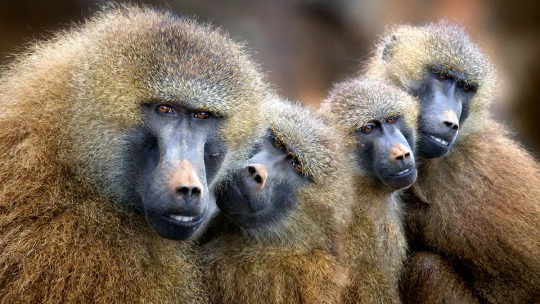
Either the definition of monkey includes apes OR we can keep using an anatomical definition and Barbary macaques get to be an ape because they're tailless.

"I've got no tails on me!"
SO
Why did all this happen? Why did we start insisting apes are monkeys, especially considering the two words were pretty much interchangeable for centuries? Well I've got one word for ya...

This the attitude that puts humans on a pedestal over other life on Earth. That there are intrinsically important features of humanity, and other living things are simply stepping stones in that direction.
At the dawn of evolutionary study, anthropocentrism was enforced by using a model called evolutionary grades. And boy howdy do I hate evolutionary grades.
Basically, a grade is a way of defining a group of animals by using anatomical "complexity". It's the idea that evolution has milestones of importance that, once reached, makes an organism into a new kind of thing. You can almost think of it like evolutionary levels. An animal "levels up" once it gains a certain trait deemed "complex".
You can probably see the issue here; that complexity is an ephemeral idea defined through subjectivity, rather than based off anything truly observable. What makes walking on 2 legs more complex than walking on four? How are tails less complex than no tails? "Complexity" in this context is unmeasurable, therefore it is unscientific. That's why evolutionary grades suck and I never want to look at one.
For primates, this meant once some of them lost their tails, grew bigger brains, and started brachiating instead of leaping, they simply "leveled up" and became apes. Despite the early recognition that apes were simply a branch of the Old World monkey family tree (1785!), the idea of grades took precedent over the phylogenetic link.
In the early years of primatology, humans were even seen as a grade "above" apes, related but separated by our upright stance and supposed far greater intelligence (this was before other apes were recognized tool users).

It wasn't until the goddamn 1970s that it was recognized all great apes should be included in the clade Hominidae alongside humanity. This was a major shift in thinking, and required not just science, but the public, to recognize just how close we are to other living species. It seems like this change has, thankfully, happened and most institutions and science respecting folks have accepted this fact. Those who don't accept it tend to have a lot more issues with science than only accepting humans as apes.

And now, we come to the current problem. Why is there a persistent idea that monkeys and apes are separate?
I want to make it clear I don't believe there was a conscious movement at play here. I think there's a lot of things going on, but there isn't some anti-monkey lobby that is hiding the truth. I think the problem is more complicated and deals with how human brains and human culture often struggle to do too many changes at once.
Now, I haven't seen any studies on this topic, so everything I say going forward is based on my own experience of how people react to learning apes (and therefore, humans) are monkeys.
First off, there is a lot of mental rearranging you have to do to accept humans as monkeys. First you, gotta accept humans as apes, then you have to stop thinking in grades and look at the family tree. Then you have to accept that apes are on the Old World monkey branch, separate from the New World monkeys.
That's a lot of steps, and I've seen science-minded zoo educators struggle with that much mental rearranging. And even while they accept this to an extent, they often find it even harder to communicate these ideas to the public.
I think this is a big reason why zoos and museums often push this idea the hardest. Convincing the public humans are apes is already a challenge, teaching them that all apes are monkeys at the same time might seem impossible.
I believe the other big reason people cling to the "apes-aren't-monkeys" idea is that it still allows for that extra bit of comforting anthropocentrism. Think of it this way; anthropocentrism puts humans on a pedestal. When you learn that humans are apes, you can either remove the pedestal and place humans with other animals, OR, you can place the apes up on the pedestal with humanity. For those that have an anthropocentric worldview, it can actually be easier to "uplift" the apes than ditch the pedestal.
Too make things worse, monkeys are such a symbol of a "primitive" animal nature that many can't accept raising them to the "level" of humanity, but removing the pedestal altogether is equally painful. So they hold tight to an outdated idea despite all the evidence. This is why there's often offense taken when an ape is called a monkey. It's tantamount to someone calling you a monkey, and that's too much of a challenge to anthropocentrism.
Personally, I think recognizing myself as a monkey is wonderful. Non-ape monkeys are as "complex" as any ape. They make tools, they have dynamic social groups, they're adapted to a wide range of environments, AND they have the best hair of all primates.
I think we should be honored to be considered one of them.



3K notes
·
View notes
Text

Gibbon
By: Unknown photographer
From: WWF Threatened Animals
1986
1K notes
·
View notes
Text
"Isn't it weird when an anthro dog furry meets a real dog? How does that make sense? How can both exist? Wouldn't it make them feel weird?"
Well humans are apes, right? If you asked an anthro creature that question they would probably counter with the old "That's like asking if humans evolved from apes why are there still apes."
Does being around apes make us feel weird? That's actually an interesting question, because when I have seen them at the zoo I have often got a weird feeling. Their expressions and body language are way more dynamic than most nonhuman animals. Of course that's just what you'd expect from our closest living relatives, and research shows we may have a genetic memory of the meaning of apes' common body language.
I think it's probably their expressiveness messing with our expectations around body language that can cause us to have a weird feeling around nonhuman apes, but I think it's a good idea to explore that kind of feeling, and maybe it can even help us understand our place in the world and build empathy with nonhuman animals. Look at this! Those are just some guys! It's just we came down from the trees on two legs, and they came down on all fours.
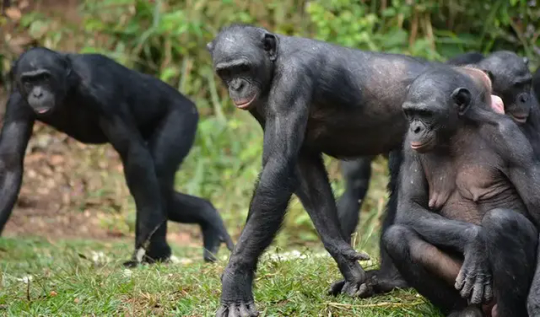
Other posts have said it but genuinely internalizing that I am just an animal and have the needs of one is helping my mental health and understanding of myself.
1K notes
·
View notes
Text
almost musical
1K notes
·
View notes
Text
Taxonomy Tournament: Mammals
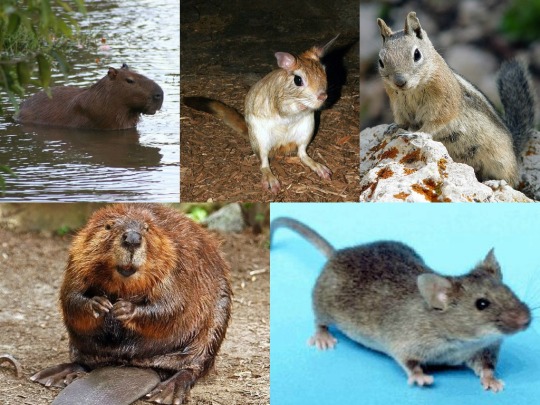
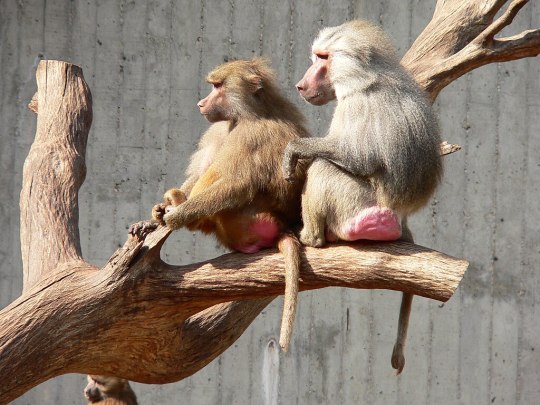
Rodents. This order is characterised by having a single pair of continuously-growing incisors. 40% of mammal species are rodents. Examples include rats, mice, beavers, capybaras, squirrels, and chipmunks.
Primates. This order includes lemurs, monkeys, apes, and the girl reading this.
#animals#biology#polls#poll tournament#zoology#rats#mice#beavers#capybaras#squirrels#chipmunks#mammals#tetrapods#lemurs#monkeys#apes#Rodents#Primates#0x3fv0x40
280 notes
·
View notes
Text



unfortunately for everyone following this account i watched the planet of the apes reboot trilogy recently and they’ve taken over my brain
rewatching dawn of the apes a few days ago totally ruined me honestly
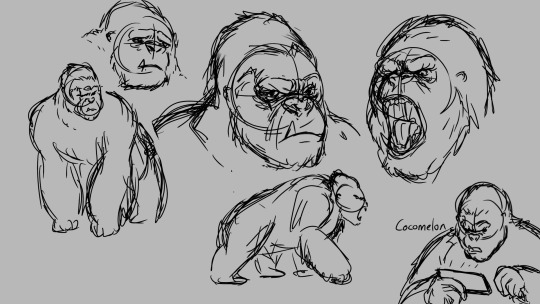

enjoy some peter jackson king kong stuff too cause thats another ape movie I watched for the first time and also really fuckin liked. I did KK and PotA crossover doodles cause of course I did and the target audience is me and my one friend (he went as far as to actually figure out the logistics of the crossover based on my doodles and is also who got me to watch both ape movies)
#the primate hyperfixation has returned#so many fucking apes in my brain#planet of the apes#dawn of the planet of the apes#pota#caesar#caesar pota#koba#king kong#king kong 2005#doodles#sketch#sketches#not kaiju for once#king kong x pota
234 notes
·
View notes
Text

Drawing Animals. Written and illustrated by Maurice Wilson. Published in 1964.
Internet Archive
198 notes
·
View notes
Text
#this poll is my masterpiece i spent so long thinking of appropriate adjectives#we would be like an orangutan#primates#apes#great apes#gorilla#chimpanzee#bonobo#poll#primatology#anthropology#gibbon
359 notes
·
View notes
Text
"[There is] fantastic news for species conservation after new populations of the gorgeous ‘Skywalker’ gibbon, known to science for only 6 years, were recently found living in the politically chaotic nation of Myanmar.
Also called the hoolock gibbon, this dainty vocalist was first described in 2017 living in the extreme south of China on a mountain in Yunnan. Classified as Endangered by the IUCN, the population was estimated to number a paltry 150 individuals, but others were believed to live in Myanmar.
Even before the recent military junta usurped the president and plunged the country into civil war, Myanmar [was a difficult place to conduct field studies, especially extensive or ongoing ones, due to ongoing conflict.]
[Although they are] now in open revolt against the military junta, [the Myanmar states of Shan and Kachin] were nevertheless destinations for an intrepid team of scientists from the Nature Conservation Society Myanmar, Fauna & Flora International–Myanmar Programme, the IUCN’s ape specialist group, and field researchers from universities in England, China, and the US.
Together, they conducted acoustic surveys, collected non-invasive DNA sampling, and took photographs for morphological identification at six sites in Kachin State and three sites in Shan State. With the help of the Myanmar conservationists, the team also interviewed locals dwelling in rural forested areas, small conservation programs, and timber companies about the frequency of sightings and the hunting pressure.
Population estimates of unknown quality and scientific rigor conducted in 2013 suggested there might be 65,000 hoolock gibbons in Myanmar, but the matter became much more complicated after the classification of the Skywalker gibbon as a separate species from the eastern hoolock gibbon—where before they were confused as the same.
“We were able to genetically identify 44 new groups of Skywalker gibbons in Myanmar,” said senior author Tierra Smiley Evans, research faculty at the UC Davis School of Veterinary Medicine, and contributing author. “This is a huge resource and success story for Myanmar.”
These gibbons sing to each other at dawn for around 22 minutes, and consume 36 different plant species; choosing fruit first, and flowers later. They seldom sleep in the same tree two nights in a row to avoid predation, and can’t swim so are often confined to territories by river systems.
The team that discovered them in China in 2017 loved Star Wars, and called them tianxing which is Chinese pinyin for “heaven movement;” a nod not only to their favorite sci-fi franchise, but also to China’s ancient history. In the famous Book of Change [aka the I Ching] of the Zhou Dynasty [1046 BCE to 265 BCE], a divination poem refers to gibbons specifically, and uses tianxing as a verb to describe their movements.
The interviews were a source of great data for the scientists. For starters, nearly all individuals in both the Kachin and Shan states could identify a Skywalker gibbon by sight and by playback of its singing, lending the exercise a good degree of reliability...
“Biologists did not believe Skywalker gibbons could live in the small remaining patches in Southern Shan State before we started this project,” Pyae Phyo Aung, executive director of Nature Conservation Society Myanmar, told the UC Davis press.
“I am delighted with our field team members who have done an excellent job, within a short period of time, building community trust for further conservation actions. This area is degraded forest. It is really important for Myanmar and China to consider extending conservation approaches for the Skywalker gibbon to this new geographic area.”
Nearly 32,000 square kilometers, or around 8 million acres of forestland in Eastern Myanmar are suitable gibbon habitat, and while existing forest reserves like Paung Taung and Mae Nei Laung are quite large, they remain unprotected. For this reason, the survey team recommended they remain considered ‘Endangered’ on the IUCN Red List until habitat protections improve."
-via Good News Network, February 21, 2024
#gibbon#apes#primates#myanmar#endangered species#china#zoology#conservation biology#conservation news#primatology#good news#hope
148 notes
·
View notes
Text
unlimited power
149 notes
·
View notes
Text

Gibbon
By: Edmund Appel
From: Natural History Magazine
1977
443 notes
·
View notes
Text
512 notes
·
View notes





